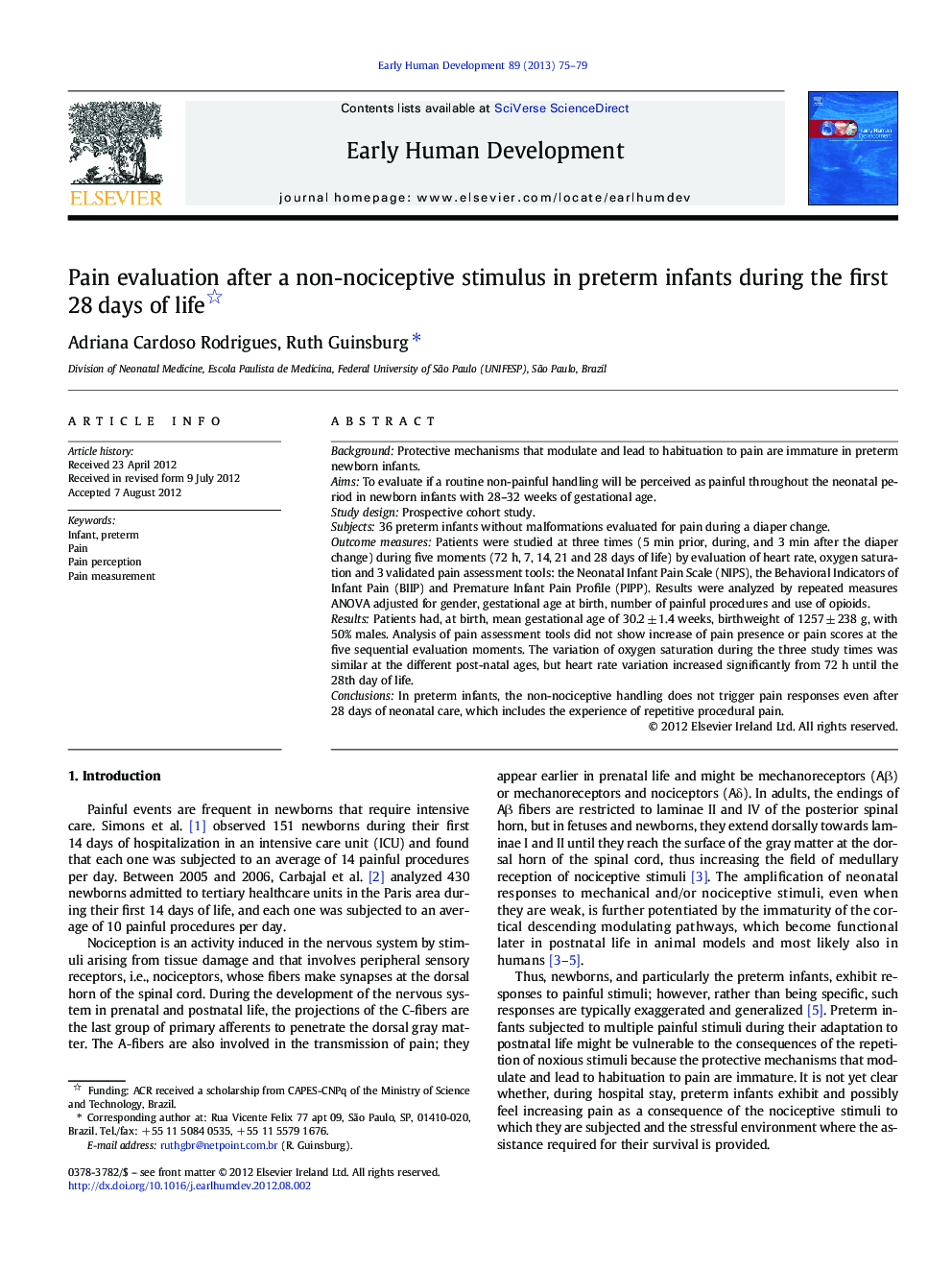| Article ID | Journal | Published Year | Pages | File Type |
|---|---|---|---|---|
| 3916734 | Early Human Development | 2013 | 5 Pages |
BackgroundProtective mechanisms that modulate and lead to habituation to pain are immature in preterm newborn infants.AimsTo evaluate if a routine non-painful handling will be perceived as painful throughout the neonatal period in newborn infants with 28–32 weeks of gestational age.Study designProspective cohort study.Subjects36 preterm infants without malformations evaluated for pain during a diaper change.Outcome measuresPatients were studied at three times (5 min prior, during, and 3 min after the diaper change) during five moments (72 h, 7, 14, 21 and 28 days of life) by evaluation of heart rate, oxygen saturation and 3 validated pain assessment tools: the Neonatal Infant Pain Scale (NIPS), the Behavioral Indicators of Infant Pain (BIIP) and Premature Infant Pain Profile (PIPP). Results were analyzed by repeated measures ANOVA adjusted for gender, gestational age at birth, number of painful procedures and use of opioids.ResultsPatients had, at birth, mean gestational age of 30.2 ± 1.4 weeks, birthweight of 1257 ± 238 g, with 50% males. Analysis of pain assessment tools did not show increase of pain presence or pain scores at the five sequential evaluation moments. The variation of oxygen saturation during the three study times was similar at the different post-natal ages, but heart rate variation increased significantly from 72 h until the 28th day of life.ConclusionsIn preterm infants, the non-nociceptive handling does not trigger pain responses even after 28 days of neonatal care, which includes the experience of repetitive procedural pain.
